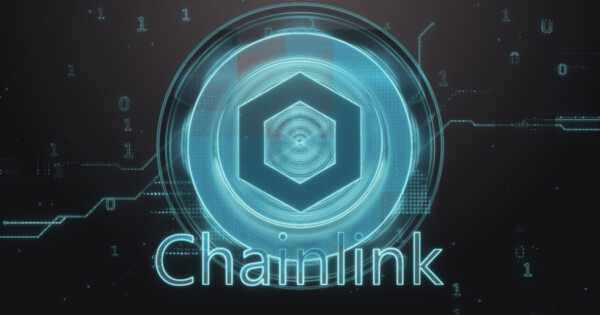Blockchain technology has garnered significant attention in recent years due to its potential to revolutionize various industries. At its core, a blockchain is a decentralized, distributed ledger that allows multiple parties to reach consensus on the state of a shared database.
There are two main types of blockchains: layer 1 and layer 2. Layer 1 blockchains are the foundational layer of a blockchain and are responsible for maintaining the integrity of the network. These blockchains are typically more secure and decentralized than layer 2 blockchains, as they are responsible for handling the most critical functions of the network.
In this blog post, we will compare the top 5 layer 1 blockchains: Bitcoin, Ethereum, EOS, Binance Smart Chain, and Cosmos. We will examine each blockchain’s features, use cases, and limitations to help you understand which one may be the best fit for your needs.
Bitcoin
Bitcoin is the first and most well-known cryptocurrency, and it is also the first decentralized digital currency. It was created in 2009 by the mysterious individual or group known as Satoshi Nakamoto.
Bitcoin is based on a decentralized, peer-to-peer network and utilizes a proof-of-work (PoW) consensus mechanism to validate transactions and add them to the blockchain. It is an open-source project, meaning that anyone can contribute to its development and improvement.
One of the main features of Bitcoin is its decentralization, which means that it is not controlled by any single entity. This makes it resistant to censorship and tampering, as there is no central point of failure.
Bitcoin is primarily used as a store of value and a means of exchange. It is widely accepted as a form of payment by merchants around the world, and it has a strong track record of stability and security. However, it has limited functionality compared to other blockchains and is not well suited for running complex smart contracts.
Ethereum
Ethereum is a decentralized, open-source blockchain platform that was created in 2015 by Vitalik Buterin. It was originally based on a proof-of-work (PoW) consensus mechanism and later converted to proof-of-stake (PoS) and is designed to support the development and execution of smart contracts.
Ethereum is often referred to as the “world computer” because it allows developers to build and deploy decentralized applications (dApps) on top of its network. These dApps can be used to automate a wide range of processes, such as supply chain management, voting systems, and financial transactions.
One of the main features of Ethereum is its support for smart contracts, which are self-executing contracts with the terms of the agreement between buyer and seller being directly written into lines of code. This allows for the automation of complex processes and reduces the need for intermediaries.
Ethereum is widely used for a variety of purposes, including the development of dApps, the creation of decentralized autonomous organizations (DAOs), and the issuance of tokens. However, its adoption has been limited by its slow transaction speed and high fees.
EOS
EOS is a decentralized, open-source blockchain platform that was launched in 2018 by the company Block.one. It is based on a delegated proof-of-stake (DPoS) consensus mechanism and is designed to support the development and execution of smart contracts.
EOS is similar to Ethereum in that it allows developers to build and deploy dApps on top of its network. However, it differs in its use of a DPoS consensus mechanism, which allows for faster transaction speeds and lower fees compared to Ethereum’s PoW mechanism. EOS also utilizes a unique governance model in which token holders can vote for block producers, who are responsible for validating transactions and adding them to the blockchain.
One of the main advantages of EOS is its scalability and user-friendliness. It is designed to handle a high volume of transactions and is intended to be more accessible to a wider audience compared to other blockchains. However, it has faced criticism for its centralization, as a small number of block producers are responsible for validating transactions, and for its lack of transparency in its governance model.
Overall, EOS is an attractive platform for developers and users who are looking for fast transaction speeds and low fees, but it may not be as decentralized or transparent as some of the other layer 1 blockchains.
Binance Smart Chain
Binance Smart Chain (BSC) is a decentralized, open-source blockchain platform that was launched in 2020 by the cryptocurrency exchange Binance. It is based on a proof-of-staked-authority (PoSA) consensus mechanism and is designed to support the development and execution of smart contracts.
BSC is unique in that it is built on top of the Ethereum network and is fully interoperable with it. This allows developers to leverage the benefits of both platforms and build dApps that can access the resources of both networks.
BSC is primarily used as a platform for the development of dApps and the issuance of tokens. It is also used for decentralized finance (DeFi) applications, such as lending and borrowing, trading, and payments. One of the main advantages of BSC is its fast transaction speed and low fees, which make it an attractive platform for developers and users.
Cosmos
Cosmos is a decentralized, open-source blockchain platform that was launched in 2019 by the company Interchain. It is based on a proof-of-stake (PoS) consensus mechanism and is designed to support the development and execution of smart contracts.
Cosmos is unique in that it is designed to be scalable and interoperable with other blockchains. It uses a modular architecture called the Cosmos Hub, which allows it to connect to other blockchains and exchange data and value with them. This allows for the creation of a decentralized network of blockchains, known as the Cosmos Network, which can communicate and interact with each other.
Cosmos is primarily used as a platform for the development of dApps and the issuance of tokens. It is also used for decentralized finance (DeFi) applications, such as lending and borrowing, trading, and payments. One of the main advantages of Cosmos is its scalability and interoperability, which make it an attractive platform for developers and users.
Conclusion
In this blog post, we compared the top 5 layer 1 blockchains: Bitcoin, Ethereum, EOS, Binance Smart Chain, and Cosmos. Each blockchain has its own unique features, use cases, and limitations, and it is important to carefully consider which one may be the best fit for your needs.
Bitcoin is a decentralized, secure, and widely accepted cryptocurrency that is primarily used as a store of value and a means of exchange.
Ethereum is a decentralized, open-source platform that supports the development and execution of smart contracts and is widely used for the creation of dApps and the issuance of tokens.
EOS is a decentralized, open-source platform that is similar to Ethereum but uses a DPoS consensus mechanism and is designed to be scalable and user-friendly.
Binance Smart Chain is a decentralized, open-source platform that is built on top of the Ethereum network and is used for the development of dApps and the issuance of tokens, as well as DeFi applications.
Cosmos is a decentralized, open-source platform that is designed to be scalable and interoperable with other blockchains and is used for the development of dApps and the issuance of tokens, as well as DeFi applications.



